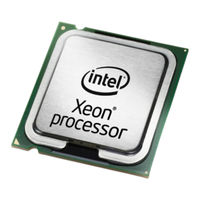Intel Xeon Manuals
Manuals and User Guides for Intel Xeon. We have 6 Intel Xeon manuals available for free PDF download: Design Manual, Datasheet, Specification, User Manual, Manuallines
Intel Xeon Design Manual (305 pages)
Processor with 512 KB L2 Cache and Intel E7500 Chipset Platform
Table of Contents
Advertisement
Intel Xeon Design Manual (44 pages)
Processor and E7500/E7501 Chipset Compatible Platform. Addendum for Embedded Applications
Brand: Intel
|
Category: Computer Hardware
|
Size: 0 MB
Table of Contents
Advertisement
Intel Xeon User Manual (38 pages)
Processor with 800 MHz System Bus, Chipset and Development Kit
Brand: Intel
|
Category: Computer Hardware
|
Size: 1 MB
Table of Contents
Intel Xeon Specification (56 pages)
Specification Update
Brand: Intel
|
Category: Computer Hardware
|
Size: 0 MB
Table of Contents
Intel Xeon Manuallines (11 pages)
Processor with 512 KB
L2 Cache System Compatibility
Brand: Intel
|
Category: Computer Hardware
|
Size: 0 MB
Table of Contents
Advertisement





